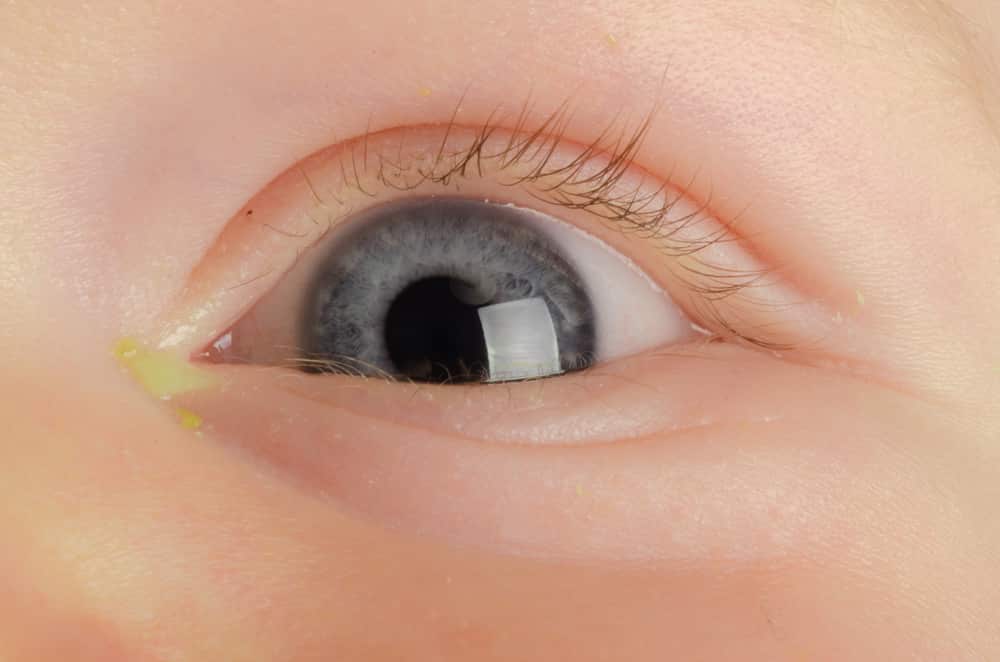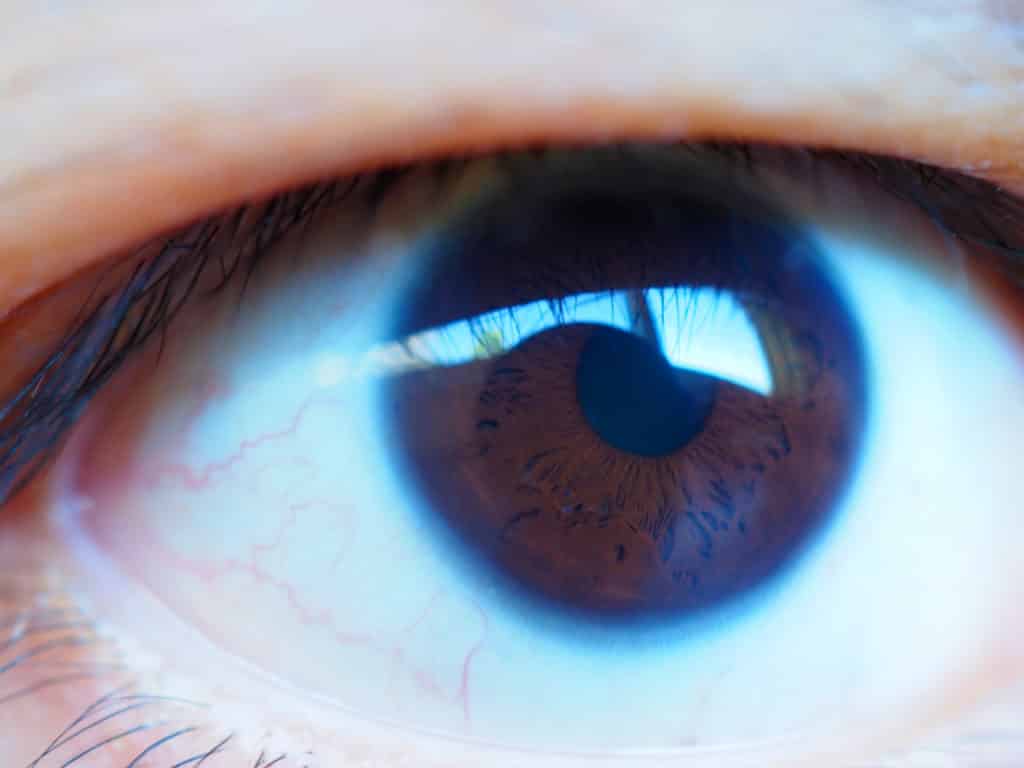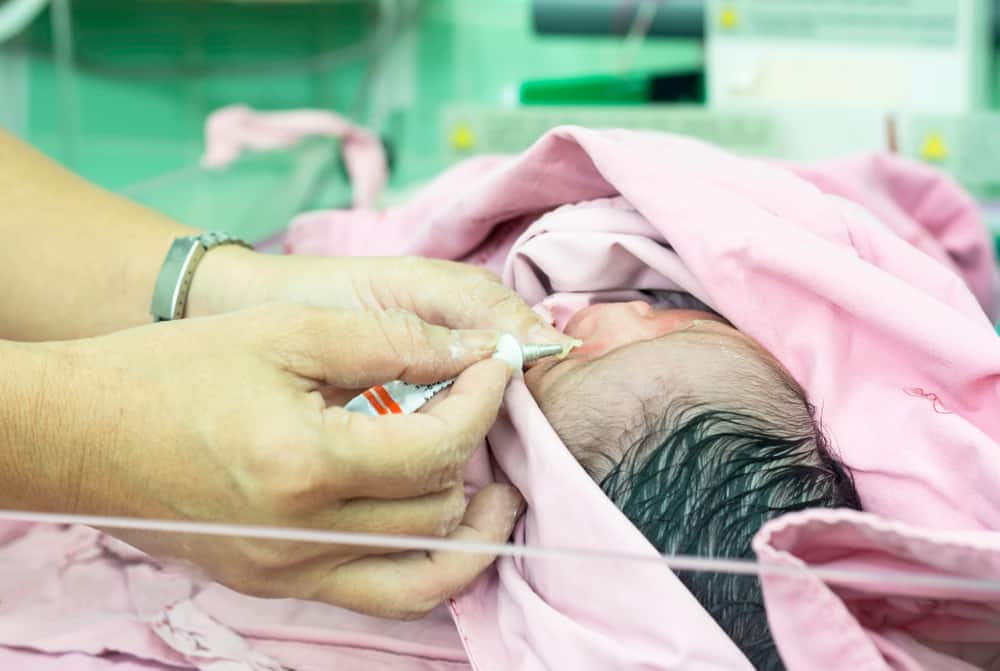Babies are the cutest, right?! One of the things every parent looks forward to experiencing with their little ones is looking into their beautiful, searching eyes, as they begin to look around and explore the world. Unfortunately, even babies are not spared from infections, and neonatal conjunctivitis is an eye infection that can occur in a newborn. See also neonatal pustular melanosis.
Not to worry, as usual, we’ve got you covered. In this article, we’ve explained all you need to know about neonatal conjunctivitis, what it is, how it happens, and what you can do to manage it.
Read on to find out more.

Table of contents
What is the conjunctiva?
The conjunctiva is a clear membrane that lines the eyelids and the white part of the eye. It forms a barrier that helps to lubricate the eye, keep it moist, and protect it from infections. Interestingly, the conjunctiva also contains immune cells that defend the eye when it encounters foreign materials.
Simply put, conjunctivitis is when there’s an inflammation or swelling of the conjunctiva, and it can be caused by a number of things.

What is Neonatal Conjunctivitis?
Neonatal conjunctivitis is also known as Ophthalmia Neonatorum or simply pink eye in babies, and it is an inflammation of the conjunctiva that occurs in newborns within the first 30 days of life.
Most of the time, it is mild and goes away on its own without being treated. However, in some cases, your baby will need to see a doctor, especially if it happens at birth.
Risk factors for Neonatal Conjunctivitis
As usual, we’ve compiled a helpful list of some of the things that can mean your baby is more likely to get neonatal conjunctivitis than other babies.
- Infections in the mother’s reproductive tract
- Baby being exposed to infectious organisms
- High birth weight
- Baby not receiving appropriate preventive eye medications at birth
- Premature rupture of membranes (PROM)
- Mechanical Ventilation
- Prematurity
- Unhygienic delivery
- Poor prenatal care for mum
What are the causes of neonatal conjunctivitis?
It is important to note that there are three reasons why your baby can come down with neonatal conjunctivitis, and we’ve outlined them here:
Blocked tear ducts
The truth is, in the first few weeks after birth, babies can have blocked tear ducts, which causes tears and mucus to collect in the eye and trap dust, causing something called sticky eye. Sometimes, this accumulation can lead to the eye becoming irritated and inflamed, thus resulting in a case of neonatal conjunctivitis.
Rarely, blocked tear ducts are due to congenital obstruction or nasal bone anomalies.
Chemical irritation
Previously, babies were routinely given silver nitrate eyedrops immediately after they were born, to prevent them from having a bacterial infection. Unfortunately, the medication can irritate a baby’s eyes and cause chemical neonatal conjunctivitis. Thankfully, this is now uncommon, as erythromycin is now used instead, and it is mild on the little one’s delicate eyes.

Bacterial or Viral infections
In this case, microbes can be introduced into your baby’s eyes from wrong hygiene practices like touching the eyes with unwashed hands.
However, more commonly your baby can get neonatal conjunctivitis from bacteria and viruses that are already in the birth canal while passing through during vaginal delivery. It is important to note that this can happen even though the mother might not have any symptoms of an infection.
There are various well-known culprits for these infections and they include the following:
- Chlamydia trachomatis
- Neiserra gonorrhoea
- Pseudomonas aeruginosa
- Staphylococcus aureus
- Streptococcus spp
- Herpes Simplex Virus (HSV)
Symptoms of Neonatal Conjunctivitis
No matter what the cause of neonatal conjunctivitis in a baby is, the symptoms are usually the same, although some have more classical symptoms. If you ever notice any of these in your baby, you should consider seeing your pediatrician.
- Pink or red discoloration of the eyes
- Puffy or swollen eyelids
- Tenderness of the eyes
- Excessive blinking
- Eye discharge – watery, pus-like, or bloody
- Sticky or crusty eyes
- Boil or sore on the eyelid

How to treat neonatal conjunctivitis
If you notice any of these symptoms or suspect that your newborn has neonatal conjunctivitis, you should take him/her to see a doctor immediately. The eye is a delicate organ and overlooking any injury to it can potentially cause long-term damage.
Blocked tear ducts can be managed with some home remedies like a Criggler massage.
Chemical conjunctivitis usually causes mild tearing that resolves on its own in 2 – 4 days.
When it’s bacterial or viral neonatal conjunctivitis, your pediatrician will prescribe antibiotics or antiviral medications. Although these are usually eye drops or eye ointments, depending on the severity of the infection, your baby may need to have oral or intravenous treatments as well.
In rare cases, your baby might need to be on admission for a while for further treatment or to undergo tests and examinations which ensure the infection has not spread.

Prevention of Neonatal Conjunctivitis
Here’s the deal; there are things you can do to prevent your baby from developing neonatal conjunctivitis, and/or developing worsening symptoms.
- Treat STIs properly: While it’s possible to have an infection without symptoms, if you do have any symptoms, ensure to get it checked out and treated completely before delivery
- Cesarean section: If you have been diagnosed with active herpes and have sores, your doctor will strongly recommend a Cesarean section for delivery to prevent the baby from being infected.
- Hand hygeine: Make sure your hands are washed with soap and water before touching your baby’s eyes. Aside from this, always remember to rinse your hands thoroughly afterward so you avoid irritating baby’s eyes as well.
- Clean any eye discharge regularly: If your baby has an eye discharge, clean it regularly by using the following steps:
- If the eyelids are glued shut, dip a clean piece of gauze or soft cloth in some lukewarm water. Then wipe the crust away with the dampened cloth
- Use a sterile cotton swab soaked in saline to wipe off any discharge on the corner of the eye
- Start wiping from the inner corner of the eye to the other side
- Wipe more than once, using a fresh dampened cotton swab each time
- Once you have cleared all the discharge, use a dry cotton swab or soft cloth to dry it
- Ensure that you do not touch the eye with your hand during the process
Conclusion
Finally, it is important to remember that when it comes to the eyes of your precious little one, you want to be as vigilant as possible. Make sure you check in with your pediatrician if you notice any of the symptoms shared in this article.
We’re confident that you have all you need to take the best care of your baby.
You’ve got this!

